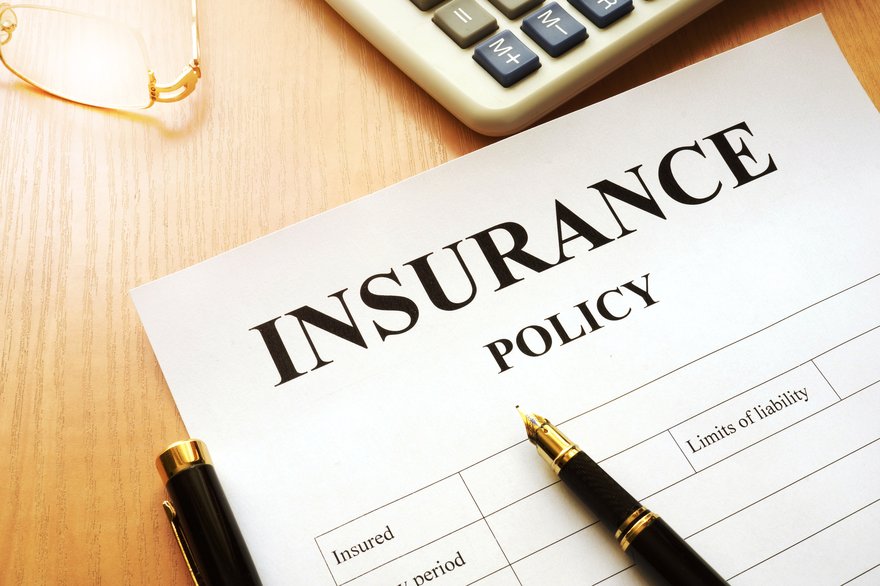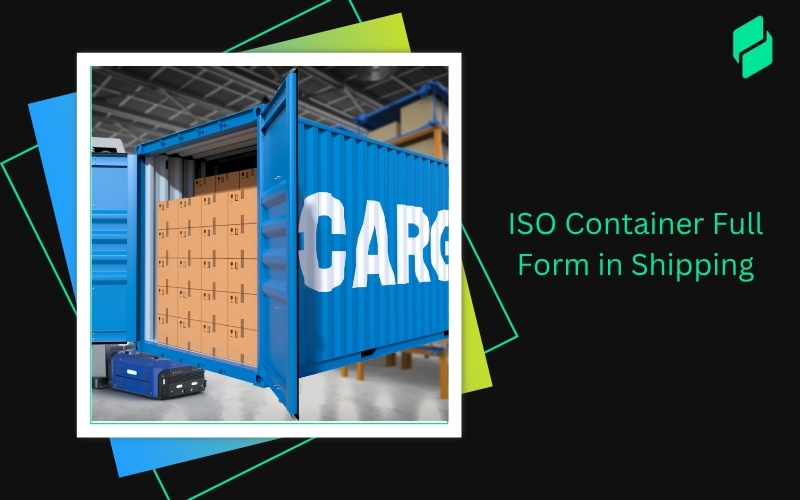Optimize your business: use unlimited savings with Pazago fulfilled now!
Get Started ->When you run an export or trade business, a well-prepared insurance claim letter for reimbursement is essential to safeguarding your cash flow. According to the National Cargo Bureau, over 55% of inspected containers were found to be non-compliant, with many instances due to documentation errors. Incomplete or inaccurate paperwork can stall claim settlements and disrupt operations, which is why attention to detail matters.
This blog will cover how to draft a clear, comprehensive claim letter that meets insurer requirements, helping you secure timely reimbursements and maintain seamless shipping.
What Is an Insurance Claim Letter for Reimbursement?
An insurance claim letter for reimbursement is a formal written request submitted to an insurance company to recover costs incurred due to a covered loss. In the context of exports and logistics, this often includes cargo damage, lost shipments, delayed deliveries, or accidents during transit.
The purpose of the letter is to outline the incident clearly, state the amount being claimed, and provide supporting documentation, including invoices, inspection reports, and proof of insurance. A well-structured claim letter helps speed up the reimbursement process and ensures compliance with insurer requirements.
For exporters and supply chain professionals, submitting a timely and accurate claim letter is essential for minimizing financial losses and maintaining cash flow.
The Importance of Well- Crafted Insurance Claim Letter
A well-crafted insurance claim letter is essential for ensuring a quick and accurate reimbursement process. It helps avoid delays, misunderstandings, and ensures a smooth settlement.
- Ensures quick and accurate claim processing.
- Reduces delays and unnecessary queries.
- Prevents misunderstandings about the incident and claim amount.
- Speeds up the settlement process.
- Crucial for businesses, particularly in exports or shipping, to protect finances and recover losses quickly.
Also Read: Understanding Shipping Insurance And Coverage For 2024
Next, let’s look at the essential components your claim letter should include to make it effective.
Key Components of an Effective Insurance Claim Letter for Reimbursement
An insurance claim letter for reimbursement is a formal document that initiates the process of recovering costs from your insurance provider. To increase the likelihood of a successful and timely claim, your letter must be clear, complete, and well-structured.
Below are the essential components that every effective claim letter should include:
- Policy Information
Start by clearly stating your insurance policy number along with the full name of the policyholder. Include any relevant identification details such as the policy start date or coverage type. This information allows the insurance company to locate your file and verify coverage quickly.
- Incident Date and Description
Provide the exact date when the incident occurred. Follow this with a detailed but concise description of the event that caused the loss or damage. Explain the circumstances clearly to help the insurer understand the context of your claim.
- Claim Amount
Specify the total amount you are claiming for reimbursement. This figure should be accurate and supported by relevant financial documents, such as invoices, receipts, bills, or repair estimates. Being precise helps prevent unnecessary delays during the claim assessment process.
- Supporting Documents
Attach all relevant documentation to validate your claim. These may include purchase receipts, medical bills, repair or replacement invoices, photos of damaged property, police or accident reports, and any prior correspondence with involved parties or service providers.
- Contact Information
Include your current phone number, email address, and mailing address. Clear contact details ensure the insurer can reach you promptly for any clarifications.
- Formal Request and Tone
End the letter with a polite but firm request for reimbursement. Mention if there are any urgent deadlines, such as impending financial obligations or claim submission time limits. A respectful tone encourages positive communication and cooperation.
- Signature and Date
Conclude your letter by signing it and adding the date of submission. This adds authenticity and indicates the formal initiation of the claim process.
By including these key components, your insurance claim letter will be professional, comprehensive, and more likely to lead to a smooth reimbursement process.
For businesses involved in exporting or trading, tools like Pazago can help manage and organize insurance documents efficiently, ensuring you never miss crucial paperwork when filing claims.
Also Read: Claim Process and Required Documents in Marine Insurance
Now, let’s discuss why writing a clear and complete claim letter is so important for a smooth reimbursement process.
Suggested Read: Understanding Import Export Insurance And Its Benefits
After understanding the key components let’s explore an easy-to-follow process to draft an effective insurance claim letter.
Step-by-Step: How to Write an Insurance Claim Letter for Reimbursement
Writing an effective insurance claim letter for reimbursement is crucial to ensure timely processing and payment. The letter should be clear, professional, and include all necessary information to avoid delays or disputes.
Here is a detailed guide to help you draft a complete and compelling claim letter:
1. Begin with Your Contact Details and Date
Start your letter by clearly stating your personal contact information at the top. This typically includes your full name, mailing address, phone number, and email address. Below your details, mention the date you are writing the letter.
2. Address the Letter Appropriately
Next, write the name and address of the insurance company, preferably the claims department. If you have a contact person or claims officer assigned to you, address the letter to them directly.
A personalised salutation, such as “Dear Mr. Sharma,” demonstrates professionalism and helps ensure your letter is routed promptly.
3. State the Purpose Clearly with a Subject Line
A concise subject line immediately communicates the letter’s intent. For example:
- Subject: Request for Reimbursement under Policy No. ABC123
- Subject: Insurance Claim for Medical Expenses – Policy No. 456XYZ
This helps the claims department identify and prioritize your letter in their workflow.
4. Introduce Yourself and Reference Your Policy
Open the body of the letter by briefly introducing yourself and mentioning your policy number. Clearly state that you are submitting a claim for reimbursement.
For example: “I am writing to request reimbursement for medical expenses incurred on [date]. My policy number is [policy number].”
This confirms your identity and links your letter to the correct account.
5. Describe the Incident or Expense in Detail
Provide a detailed but concise explanation of the reason for your claim. Include:
- The date(s) of the incident, treatment, or purchase
- The nature of the event or service received
- Any relevant background information that supports your claim
For example, if claiming medical expenses, briefly describe the treatment and how it relates to your coverage. Avoid including unnecessary details to keep the letter concise and focused.
6. Specify the Amount Requested for Reimbursement
Clearly state the total amount you are claiming. Ensure this matches the total of the receipts and supporting documents you will include.
For example: “I am requesting reimbursement of INR 25,000, which covers the attached medical bills and pharmacy receipts.”
Being transparent about the amount helps avoid confusion and facilitates quicker processing.
7. List All Supporting Documents Attached
To support your claim, insurance companies require detailed proof. In your letter, list all attached documents such as:
- Original receipts and invoices
- Medical prescriptions or reports
- Accident or police reports, if applicable
- Repair estimates or photos of damaged property
Mentioning these attachments upfront ensures the insurer knows exactly what evidence you have provided.
8. Politely Request Timely Processing
Conclude your letter by requesting prompt attention to your claim. If there are any urgent reasons, such as ongoing medical treatment or financial hardship, briefly mention them here.
For example: “I kindly request that my claim be processed at the earliest to facilitate necessary payments.”
A polite tone encourages cooperation and shows professionalism.
9. Provide Contact Information for Follow-up
Please restate your phone number and email so the insurer can easily contact you if they need further details. Mention your availability if relevant, such as preferred calling hours. This ensures efficient communication throughout the claim review process.
10. Close Formally and Sign the Letter
End with a courteous closing, such as “Thank you for your assistance” or “Looking forward to your prompt response.” Sign your name above your printed name to authenticate the letter. If submitting electronically, consider using a scanned signature or note that it’s a digital copy.
By following these steps, you can draft a comprehensive insurance claim letter that clearly communicates your reimbursement request and supports quick, accurate processing. Clear documentation and professionalism greatly improve your chances of a smooth and timely claim settlement.
Moving on, let’s check out a sample template of how to write an insurance claim letter.
Sample Insurance Claim Letter Format
If you're unsure how to write an insurance claim letter, a ready-to-use format can save you time and effort.
Email Template for Insurance Claim
For quick communication, email is often the easiest way to submit your insurance claim. Here's a simple email format that includes all the key details insurers typically look for.
Letter Template for Insurance Claim
If your insurance provider requires a formal letter, this template will guide you through the structure and content needed to submit a strong, professional claim.
Also Read: Sample Cargo Insurance Claim Letter for Loss Notice: A Comprehensive Guide
It’s also important to know which mistakes to avoid when submitting your claim to prevent delays or rejection.
Common Mistakes to Avoid

Filing an insurance claim for reimbursement requires precision, clarity, and timeliness. Even well-intentioned claims can be delayed or rejected due to avoidable mistakes. Below are some of the most common mistakes businesses make when submitting a claim and how you can avoid them.
1. Missing or Incomplete Documentation
One of the most frequent errors is not attaching all the necessary documents. Insurance providers typically require detailed evidence to process a claim. This includes:
- Photographs of the damage
- Invoices and repair estimates
- Police or incident reports (if applicable)
- Receipts for emergency expenditures
- Inventory loss details
Tip: Create a checklist before sending your claim letter to ensure nothing is left out.
2. Vague or Inaccurate Description of the Incident
A claim letter must clearly describe what happened, when it occurred, and what was affected. Vague or overly emotional language can weaken your case.
Instead of writing: "We experienced a terrible loss that disrupted our business."
Write: "On May 10, a power surge caused by a transformer malfunction damaged our refrigeration units, resulting in the spoilage of perishable goods worth ₹1,50,000."
Be factual and specific.
3. Not Referring to Your Policy Coverage
Your claim should refer to the relevant clauses or sections in your insurance policy. This shows you understand what you're eligible for and strengthens your position.
Mistake: Simply requesting reimbursement without policy reference.
Correct Approach: Mention sections like “Coverage Clause 3.2” or “Business Interruption Coverage” as applicable.
4. Delaying the Claim Submission
Most insurance policies have a deadline for reporting incidents. Submitting your claim late, even with valid reasons, can lead to denial or reduced payouts.
Tip: File your claim as soon as possible after the incident. Even if all documents aren’t ready, send an initial notice and follow up with details.
5. Unprofessional Formatting or Tone
A claim letter is a formal business communication. Using overly casual language, slang, or a poorly formatted letter can reduce its effectiveness.
What to avoid:
- Long, unstructured paragraphs
- Emotional appeals
- Typos and grammatical errors
What to use instead:
- Clear structure with headers or bullet points
- Professional tone and polite language
- Proofread content before sending
By avoiding these common mistakes, you not only speed up the processing time but also increase your chances of a successful claim approval. Remember, a well-prepared claim reflects your professionalism and helps insurance providers process your request more efficiently.
Also Read: Essential Tips and Checklist for Smooth Cargo Insurance Claims Procedure
Finally, discover how Pazago can help you manage your insurance claims more efficiently.
How Pazago Helps Exporters During Insurance Reimbursement Claims

Pazago is an all in one export management platform designed to simplify the export process and support Indian exporters during unexpected disruptions. When losses occur and insurance claims are required, Pazago ensures you're prepared with the right documentation, proof, and communication tools.
Here is how Pazago can help you.
- Live Shipment Tracking: Pazago enables you to monitor shipments in real-time, allowing you to document any delays, damage, or deviations.
- Centralized Document Management: All critical documents, such as invoices, inspection reports, shipping receipts, and policy certificates, can be securely stored on Pazago. This makes it easier to retrieve and attach necessary evidence when submitting a reimbursement request.
- Pre-Shipment Quality Checks: Avoid claim rejections by ensuring your goods meet international quality standards before they’re dispatched. Pazago offers pre-shipment inspection support, reducing the likelihood of delivery disputes and product returns.
- Integrated Insurance Access: With built-in insurance services, Pazago helps you get covered quickly and manage policies from a single dashboard. When it’s time to file a claim, you can easily refer to your coverage details and initiate the process without delays.
- Faster Coordination with Stakeholders: Pazago serves as a central hub for communication between exporters, freight providers, and insurers, facilitating easier resolution of incidents, prompt follow-up on claims, and preventing miscommunication.
Pazago provides exporters with the tools they need to manage claim processes confidently, reduce financial stress, and maintain business continuity even in the face of unexpected losses.
Conclusion
Writing a clear and well-structured insurance claim letter for reimbursement is crucial to ensuring a smooth and timely settlement of your claims. Accurate documentation, precise details, and professional communication can significantly reduce delays and improve your chances of receiving the compensation you deserve.
For exporters and businesses, understanding the complexities of international trade and having the right tools to manage shipments, documents, and insurance claims is essential to maintaining cash flow and operational stability.
Pazago offers a comprehensive platform designed to simplify your export processes, streamline documentation, and support you throughout the insurance claim journey.
Ready to simplify your export operations and insurance claims? Explore Pazago today and take control of your supply chain and reimbursement process with ease.
Frequently Asked Questions (FAQs)
1. What is an insurance claim letter for reimbursement?
An insurance claim letter for reimbursement is a formal written request sent to an insurance company asking to recover costs for losses or damages covered under your policy. It outlines the incident, the amount claimed, and includes supporting documents.
2. How soon should I submit an insurance claim letter?
It’s best to submit your claim as soon as possible after the incident occurs. Most insurance policies have strict deadlines for filing claims, and delays can result in denial or reduced payouts.
3. What documents should I attach with my insurance claim letter?
Attach all relevant documents such as invoices, receipts, repair estimates, photographs of damages, police or incident reports, and any other proof that supports your claim.
4. Can Pazago help with managing insurance claims?
Yes, Pazago provides exporters with tools like live shipment tracking, centralized document storage, and integrated insurance management to streamline and simplify the insurance claim and reimbursement process.
5. What are the common mistakes to avoid in an insurance claim letter?
Avoid missing documentation, vague incident descriptions, not referring to your policy coverage, delaying submission, and unprofessional formatting or tone.
6. How can I ensure my insurance claim is processed quickly?
Submit a clear, detailed, and well-organized claim letter with all necessary documents attached. Use a professional tone and follow your insurer’s claim guidelines carefully.


.png)








